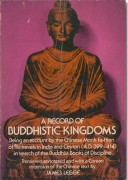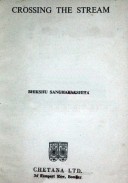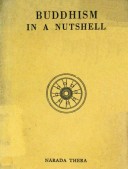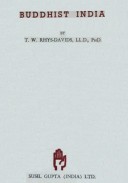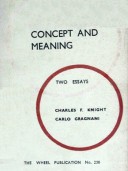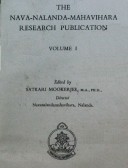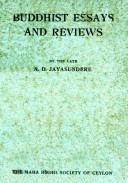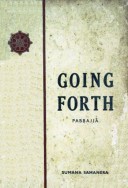Tìm Sách
Sách tiếng Anh-English >> A Record Of Buddhistic Kingdoms
Thông tin tra cứu
- Tên sách : A Record Of Buddhistic Kingdoms
- Tác giả : Fa Hien
- Dịch giả : James Legge
- Ngôn ngữ : Anh-Hoa
- Số trang : 123
- Nhà xuất bản : Dover Publication, Inc, New York
- Năm xuất bản : 1965
- Phân loại : Sách tiếng Anh-English
- MCB : 12010000003889
- OPAC :
- Tóm tắt :
A Record Of Buddhistic Kingdoms
Being an account by the Chinese monk Fâ-Hien
Of his travels in India and Ceylon (A. D. 399-414)
In search of the Buddhist books of discipline
Translated and annotated with a Corean recension of the Chinese text
By JAMES LEGGE
Dover Publication, Inc, New York
PREFACE
Several times during my long residence in Hong Kong I endeavoured to read through the ‘Narrative of Fâ-hien’; but though interested with the graphic details of much of the work, its columns bristled so constantly – now with his phonetic representations of Sanskrit words, and now with his substitution for them of their meanings in Chinese characters, and I was, moreover, so much occupied with my own special labours on the Confucian classics, that my success was far from satisfactory. When Dr. Eitel’s ‘Handbook for the student of Chinese Buddhism’appeared in 1870, the difficulty occasioned by the Sanskrit words and names was removed, but the offer difficulty remained; and I was not able to look into the book again for several years. Nor had I much inducement to do so in the two copies of it which it had been able to procure, on poor paper, and printed from blocks badly cut at first, and so worn with use as to yield books the reverse of attractive in their appearance to the student.
In the meantime I kept studying the subject of Buddhism from various sources; and in 1878 began to lecture, here in Oxford, on the Travels with my Davis Chinese scholar, who was at the same time Boden Sanskrit scholar. As we went on, I wrote out a translation in English for my own satisfaction of nearly half the narrative. In the beginning of last year I made Fâ-hien again the subject of lecture, wrote out a second translation, independent of the former, and pushed on till I had completed the whole.
Contents
PREFACE
INTRODUCTION. Life of Fâ-Hien, genuineness and integrity of the text of his narrative; number of the adherents of Buddhism
Chapter
I. From Ch’ang-Gan to the sandy desert
II. On to Shen-Shen and thence to Khoten
III. Khoten, Processions of images. The king’s new monastery
IV. Through the Ts’ung or ‘onion’mountains to K’eehch’â; probably skardo, or some city more to the east in Kadak
V. Great quinquennial assembly of monks, relics of Buddha. Production of the country
VI. On towards north India. Darada. Image of Maitreya Bodhisattva
VII. Crossing of the Indus. When Buddhism first crossed that river for the east
VIII. Woo-Chang, or Udyâna. Monasteries and their ways traces of Buddha
IX. Soo-Ho-To. Legend of Buddha
X. Gandhâra. Legends of Buddha
XI. Takshasilâ. Legends. The four great topes
XII. Purushapura , or Peshâwur. Prophecy about king Kanishra and his tope. Buddha’s alms-bowl. Death of Hwuy-ying
XIII. Nagâra. Festival of buddha’s skull-bone. Other relics, and his shadow
XIV. Death of Hwuy-king in the little snowy mountains Lo-E. Pohnâ. Crossing the indus to the east.
XV. Bhida. Sympathy of monks with the pilgrims
XVI. On to Mathurâ, or Mutra. Condition and customs of central . India; of the monks, Vihâras, and monasteries
XVII. Sankâsya. Buddha’s ascent to and descent from the Trayastrimsas heaven, and other legends
XVIII. Kanyâkubja, or Canouge. Buddha’s preaching
XIX. Shâ-Che. Legend of Buddha’s Danta-Kâshtha
XX. Kosala and Srâvasti. The Jetavana Vihâra and other memorials and legends of Buddha. Sympathy of the monks with the pilgrims
XXI. The three predecessors of Sâkyamuni in the Buddhaship
XXII. Kapilavastu. Its desolation. Legends of Buddha’s birth, and other incidents in connexion with it
XXIII. Râma, and its tope
XXIV. Where Buddha finally renounced the world, and where he died
XXV. Vaisâli the tope called ‘weapons laid down’. The council of Vaisâli
XXVI. Remarkable death of Ânanda
XXVII. Pâtaliputtra , or Patna, in Magadha. King Asoka’s spirit-bult palace and halls. The buddhist Brahman, Râdhasâmi, Dispensaries and hospitals
XXVIII. Râjagriha, new and old. Legends and incidents connected with it
XXIX. Gridhra-kuta hill, and legends. Fâ-hien passes night on it. His reflections
XXX. The Srataparna cave, or cave of the first council. Legends. Suicide of a Bhikshu
XXXI. Gayâ. Sâkyamuni’s attaining to the Buddhaship, and other legends
XXXII. Legend of king Asoka in a former birth, and his Naraka
XXXIII. Mount Gurupada, where Kasyapa Buddha’s entire skeleton is
XXXIV. On the way back to Patna, Vârânasi, or Benâres. Sâkyamuni’s first doing after becoming Buddha
XXXV. Dakshina, and the pigeon monastery
XXXVI. In Patna, Fâ-hien’s labours in transcription of manuscripts, and Indian studies for three years
XXXVII. To Champâ and Tâmalipit. Stay and labours there for three years . Takes ship to Singhala, or ceylon
XXXVIII. At Ceylon. Rise of the kingdom. Feats of Buddha. Topes and monasteries. Statue of Buddha in Jade. Bo tree. Fesival of Buddha’s tooth
XXXIX. Cremation of an Arhat. Sermon of a devotee
XL. After two years takes ship for China. Disastrous passage to Java; and thence to China; arrives at Shan-Tung; and goes to Nanking. Conclusion or l’envoi by another writer
Index
 Facebook
Facebook
 Google
Google
 Google+
Google+
